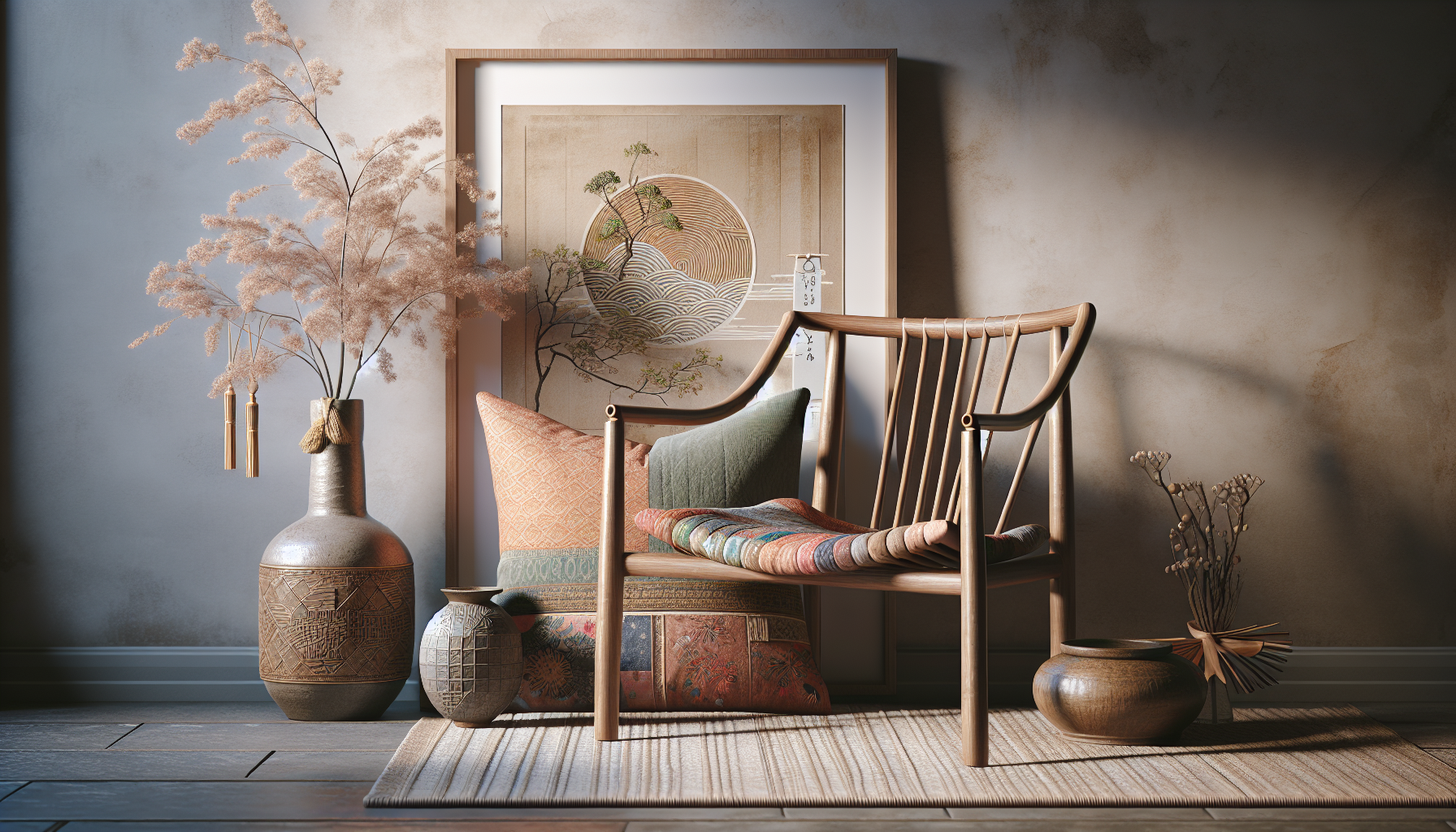Have you ever wondered if a design style known for its calmness and minimalism could also work for someone with a vibrant personality? Japandi, a harmonious blend of Japanese and Scandinavian aesthetics, often emphasizes simplicity and tranquility, but does that mean it’s not suited for those who love exuberance and lively decor?
Understanding Japandi Design
Japandi design is a unique hybrid style that combines elements of Japanese minimalism and Scandinavian functionality. It promotes a sense of simplicity, comfort, and sustainability, focusing on natural materials, earthy tones, and a clutter-free environment. While it may seem like it’s tailored more for introverts or those who appreciate serene spaces, it’s time to consider how extroverts can incorporate their lively tastes within this enchanting style.
The Core Principles of Japandi
At its heart, Japandi design revolves around several fundamental principles that create a balanced and serene environment. Let’s break these down:
-
Minimalism: Japandi embraces a “less is more” philosophy. This means choosing quality over quantity, opting for carefully selected furniture and accessories that serve a purpose.
-
Nature-inspired materials: The use of wood, bamboo, silk, and ceramics is prevalent in Japandi decor. These materials not only bring warmth but also foster a connection to nature.
-
Neutral Color Palette: Earthy colors and muted tones, such as whites, blacks, and browns, define this design style. However, this doesn’t mean it has to be dull!
-
Functional Spaces: Every piece in a Japandi home is chosen for its functionality and aesthetic value, promoting organization and harmony.
-
Cultural Fusion: While rooted in Japanese and Scandinavian design, Japandi allows for personal expressions and variations.
The Challenge for Extroverts
Now that you understand the principles of Japandi, you may start to wonder: How does this blend of simplicity and serenity accommodate extroverts who thrive on vibrant decor? It’s common to think that a style focused on minimalism might stifle expressive energies, but that’s where creativity comes into play!
Balance in Boldness
Extroverts often enjoy colors, patterns, and lively furniture that make a statement. While Japandi values subtlety and simplicity, it doesn’t mean you can’t incorporate bold elements.
Utilizing Accent Pieces
One approach is to introduce accent pieces that embody your lively nature while still adhering to the overall minimalist theme. Consider these suggestions:
| Accent Piece Type | Suggestions | Japandi Compatibility |
|---|---|---|
| Art | Bright paintings or playful prints | Opt for frames that have a natural finish or muted colors. |
| Throw Pillows | Colorful cushions in geometric patterns | Choose fabrics in natural fibers to maintain texture balance. |
| Rugs | Bold patterns or vibrant colors | A rug can anchor a space; choose one with simple shapes that harmonize with the Japandi vibe. |
| Accessories | Fun decor items or unique sculptures | Keep it minimal with only a few standout pieces to avoid clutter. |
By selecting a few bold elements and allowing them to shine in a carefully curated environment, you can achieve a perfect balance that embraces both the serenity of Japandi and your expressive personality.
Vibrant Color Solutions
The neutral tones inherent to Japandi may feel restrictive at first glance, but this doesn’t mean you have to shy away from color altogether!
Infusing Color Creatively
Embracing a vibrant personality while adhering to the Japandi aesthetic can be accomplished through creative color infusion. Here are some ideas:
-
Feature Walls: Painting one wall in a bold color that resonates with your extroverted energy can create a focal point without overwhelming the space.
-
Natural Accents: Add colorful indoor plants or flowers to bring liveliness to your home. The greenery aligns with Japandi’s nature-centric approach while providing splashes of vibrant color.
-
Artwork: Large, vibrant canvas pieces can enhance the atmosphere of a room. Look for art that speaks to your interests and provides a joyful contrast against a neutral backdrop.
Choosing the Right Hues
While it’s great to incorporate vibrant colors, selecting the right hues is essential to ensure harmony within the Japandi style. You’ll want to consider colors that evoke joy while complementing the overall aesthetic. Here are recommended hues:
| Color Family | Suggested Colors |
|---|---|
| Warm Tones | Soft coral, muted mustard |
| Cool Tones | Gentle teal, ocean-inspired blues |
| Earthy Shades | Dusty rose, rustic greens |
By choosing colors that maintain a certain softness and balance, you can achieve a lively yet peaceful atmosphere that’s quintessentially Japandi.
Accessorizing with Joyful Decor
Accessories play a pivotal role in adding life and personality to your space. They are your chance to showcase your extroverted spirit while still embracing the core tenets of Japandi design.
Selecting the Right Accessories
When choosing decor and accessories, think about how they contribute to the room’s overall feel, keeping the following in mind:
-
Natural Materials: Aim for pieces made from wood, ceramics, or textiles that celebrate authenticity. These materials are in harmony with Japandi.
-
Eccentric Shapes: Choose items with interesting shapes or forms that spark conversation without overwhelming the space.
-
Meaningful Items: Incorporate pieces that tell a story or hold significant value to you. Personal touches can add depth and warmth to your decor!
Creating Groupings
A thoughtful arrangement of accessories ensures that your vibrant pieces work cohesively in the Japandi style. Grouping items can create visual interest without cluttering the space. Here’s how:
-
Triad Grouping: Use three varying sizes of items. Perhaps a large vase, a medium sculpture, and a small decorative bowl create a visually appealing arrangement.
-
Layering Textures: Combine smooth and textured items for contrast, like a wood sculpture alongside a soft-textured textile based decor item.
-
Symmetry and Asymmetry: Experiment with both approaches in your accessory placement. Symmetrical arrangements can evoke calm, while asymmetrical placements may spark energy.
Embracing Patterns
Patterns are a great way to add liveliness, but they must be integrated carefully. Ensure that they maintain a sense of balance. Try choosing:
-
Subtle Patterns: Use textiles with understated geometric designs or nature-inspired motifs that tie back to the natural elements in Japandi.
-
Layered Patterns: Combine patterns in the same color family or with a similar texture to create harmony while still expressing your personality.
Creating Lively Textures
Texture adds layers and depth to your space—and it doesn’t have to contradict Japandi values. Adding different materials can enhance the vitality of your home.
Introducing Mixed Textures
-
Fabrics: Incorporate linens, wools, and naturals to create a warm atmosphere. Throw blankets in lively patterns or vivid colors can act as both decorative and functional items.
-
Wood and Metal Combinations: Use metal accents alongside wooden furnishings. For instance, a metal chair can offer a lively contrast to a wooden table, maintaining balance and interest.
Layering Fabrics
Layering textiles like rugs, cushions, and curtains can create depth and movement in your environment. Consider textures like:
| Fabric Type | Use Cases |
|---|---|
| Linen | Lightweight throws or pillows |
| Wool | Cozy rugs or blankets |
| Cotton | Bright, printed cushion covers |
By thoughtfully layering fabrics and textures, you can break up the often solid visual lines found in minimalist design while highlighting your extroverted style.
Japandi’s Multi-Purpose Spaces
One of the appealing aspects of the Japandi aesthetic is its adaptability. You can create multifunctional spaces that cater to lively gatherings while still maintaining a serene atmosphere.
Designing for Connection
Creating areas for both relaxation and social interaction can enhance your home experience. Consider the following tips:
-
Flexible Seating: Include versatile seating options such as floor cushions or poufs in your lounge areas to encourage spontaneous gatherings.
-
Large Tables: Choose a dining or workspace table that invites people to gather around. A raw wood table can be rustic and inviting, encouraging joyous interactions.
-
Open Spaces: Keeping areas open and airy helps create a space that feels welcoming for guests while allowing for personal relaxation.
Zones for Flow
Establishing separate zones invites various activities yet maintains the overall tranquil vibe of the Japandi style. Use rugs or furniture to delineate spaces, creating subtle barriers while keeping the design cohesive.
Embracing Personal Expression
Your home reflects your individuality, and that should be celebrated regardless of design style! Japandi gives you space to breathe while incorporating the extroverted elements of your personality.
Curating Personal Spaces
-
Memory Corners: Designate a small section for personal memorabilia, photos, or travel treasures. It can serve as both a nostalgia hub and a vibrant conversation starter.
-
Creative Workspaces: If you work or create from home, ensure that your workspace reflects your energy. Include motivational items, lively art, or dream boards that inspire you.
Frequent Refreshes
Every so often, rotate your accessories or art pieces. Bring in new vibrant elements or take out old ones to keep the energy flowing and maintain an engaging environment.
Conclusion
It’s absolutely possible to embrace Japandi design while celebrating your extroverted personality. By being strategic with colors, patterns, textures, and accessories, you can establish a home that feels both serene and spirited.
Your living space doesn’t have to be limited by traditional design definitions; instead, it should be a canvas that reflects your unique essence. So, if you’ve been hesitant about adapting a style like Japandi because of your vibrant personality, consider the potential for creativity that lies within this calm and balanced design approach. Whatever your innate style may be, find ways to make it yours within the beautiful framework of Japandi design!

